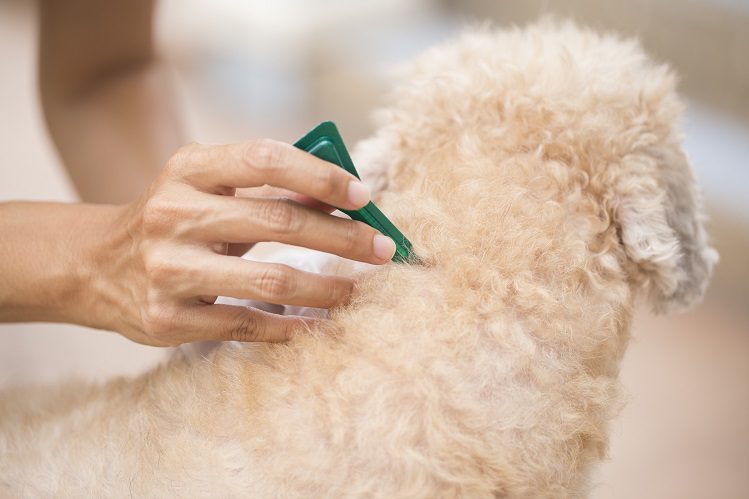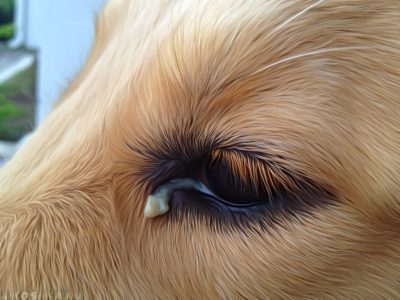
Do I need to be afraid of ticks in winter and what is babesiosis?
Says veterinarian Boris Mats.
Are ticks dangerous in winter? How often should a dog be treated? How can a dog become infected with babesiosis and is it always infected when bitten? Boris Mats, a veterinarian at the Sputnik veterinary clinic, talks about these and other important topics in his article.
Many people think that ticks exist only 3 months a year: from June to August. But the fact is that ticks are dangerous all the time while it is 0 degrees outside and above. And this can be even in December. Therefore, treatments should be carried out at least always when there are positive temperatures outside. As a maximum – all year round.

Babesiosis (the same as piroplasmosis) is a blood parasitic disease transmitted by ixodid ticks. Now a little more clear.
“Blood parasitic” – is it a blood parasite? No. Babesia are microscopic organisms that multiply inside red blood cells and destroy them, which leads to the development of anemia. Erythrocytes are red blood cells. The main function of erythrocytes is the transport of oxygen. Oxygen is needed for respiration and energy production by all cells. Cells need energy to spend it on performing functions: the production of hormones and enzymes, the neutralization of toxic substances, and so on.
Cells make up tissues (nervous, muscle, connective, bone), tissues make up organs (liver, kidneys, intestines, brain), organs make up the body (cat, dog). If the erythrocytes are destroyed by babesias, they cannot carry oxygen, the cells cannot produce energy and perform their functions, organ failure begins (for example, kidney, liver, and so on) and the body dies. The presence of parasites in red blood cells also triggers immune reactions, in which the body itself begins to attack them and not only, which only exacerbates anemia.
The tick sits on the animal, then inserts its oral apparatus into the skin. After it lets saliva into the host’s body. It is at this stage that infection occurs, since babesia live in the salivary glands of the tick. Then the parasites travel through the body and destroy red blood cells. Afterwards, a new, babesi-free tick bites the infected dog and swallows the parasites along with the blood. Then the babesia from the tick’s intestines enter its salivary glands, and it is ready to infect again.
As mentioned above, the main route of transmission of babesia is ticks. However, there is a type of Babesia that is dangerous to dogs and can be passed directly from dog to dog – Babesia Gibsoni. This usually happens during fights. It is also believed that the species crosses the placenta. Most likely, this mode of transmission made Babesia Gibsoni more resistant to drugs.

You and I already know that due to the destruction of red blood cells, the body ceases to receive enough oxygen. To imagine the initial stages, think of yourself in a small enclosed space that has not been ventilated for a long time.
There is a feeling of suffocation. At the onset of the disease, animals have approximately the same sensations, which is manifested by lethargy, decreased appetite, and weight loss.
Due to the fact that red blood cells are destroyed, hemoglobin is released – a protein that carries oxygen in the red blood cell. Therefore, urine turns brown, and the sclera of the eyes may turn yellow.
Since babesia is a foreign object for the body, the body temperature rises above 39,5 degrees.
In the acute and atypical course of the disease, vomiting, diarrhea, impaired consciousness, red spots – small bruises throughout the body, convulsions can be observed.
The presence of a tick on a dog does not always mean that the dog is infected. The converse is also true: if a dog is sick, it will not always be possible to find a tick.
So, if you find a tick, follow the instructions below:
We are convinced that a tick is a tick. Often confused with eschar, nipple or papilloma. The tick has 4 pairs of legs. The nipple does not. If in doubt, contact your veterinarian at this stage.
We take a tongs twister or tweezers. Next, we try to capture the tick as close to the skin as possible.
We remove the tick. There are two opinions that are mutually exclusive. According to experts from the Russian Federation and the CIS countries, the tick must be removed with smooth rotational movements and cannot be pulled. According to Western experts, the opposite is true. I am inclined to believe that both options are acceptable. You can choose more attractive one for you. The main thing is to do everything as smoothly as possible and not leave the head of the tick in the animal.
We make sure that the entire tick is removed. We look to see if there is a head on the abdomen that you pulled out.
We treat the skin and the wound after the bite. An aqueous 0,05% solution of Chlorhexidine Bigluconate will do.
We take the tick to the clinic, depending on the recommendations of your doctor.
We are taking your pet in for a checkup and further advice.
If the pet has already shown symptoms, we do not look for a tick, but immediately go to the clinic. The sooner the diagnosis and treatment is started, the more chances to help the dog.
Diagnosis is based on physical examination, life and medical history, and additional methods. The study of blood under a microscope and PCR are the leading tests. A general analysis and biochemical blood tests will be required to assess the severity of anemia and the level of organ damage. Depending on the condition of the animal and symptoms, the doctor may suggest additional tests.
Treatment is divided into two parts: the destruction of babesia and maintenance of the body.
If we talk about the most common type of babesia, Babesia Canis, with timely treatment, 1-2 injections of a special preparation are enough. If the animal has begun to develop severe symptoms or the condition is caused by some other type of babesia, longer and more serious treatment may be required. These include immunosuppressive therapy, blood transfusion, antibiotic therapy, droppers, and so on.
The rules are pretty simple. The main thing is regular treatments against ixodid ticks.
Many people think that ticks exist only 3 months a year: from June to August. The fact is that ticks are dangerous all the time while it is 0 degrees or more outside. And this can be even in December. Therefore, treatments should be carried out at least always when there are positive temperatures outside. As a maximum – all year round. We carry out the treatment strictly according to the instructions, depending on the chosen preparation, once every 28 days or once every 12 weeks.
Many now do not understand the logic. Indeed, if there are no ticks in cold weather, then why process it? The fact is that there are ticks in winter, only others. And then there are fleas. All these parasites with a normal immune status of the pet are unlikely to lead to death. However, they can reduce the quality of his life.
Other recommendations:
- During trips to the country or to the forest, in addition to tablets or drops, you can use a collar
- Collars must be wiped from the inside as they get dirty
- Inspect your pet, people and clothing after walking
- Closely monitor the general condition of the dog.
- Isn’t it bad to treat your pet so often?
Modern drugs are safe. Of course, there can be side effects. As a rule, they are associated with individual intolerance, but this is extremely rare.
- We treated the dog, and then we found a tick, is the drug ineffective?
Some drugs may indeed be ineffective – or perhaps the processing was carried out incorrectly. However, in most cases, if the instructions for the preparation are followed, even the presence of a tick on an animal will not indicate infection. Babesia does not come out immediately when a tick bites, they need some time. As a rule, the tick by this moment is already affected by the drug and dies. A treated pet has a low chance of getting infected, but you still need to go to the clinic to check the situation.
- What to do if the pet licked drops on the withers?
Everything is very individual and depends on many factors. Contact your veterinarian.
- Which is better: pills or drops?
If we are talking about tablets and drops of one manufacturer and one line, then there is no fundamental difference. Use what you like best. Most importantly, carefully read the instructions for the drug and strictly follow the recommendations for use. For any questions, please contact your veterinarian.
Author of the article: Mac Boris Vladimirovich veterinarian and therapist at the Sputnik clinic.






